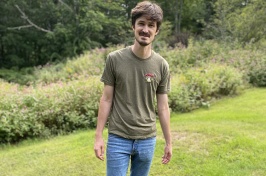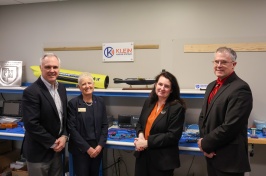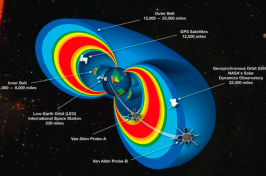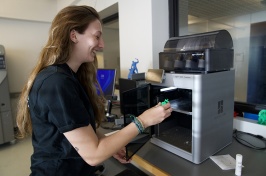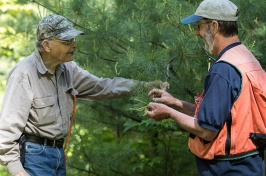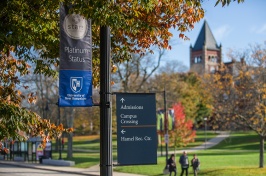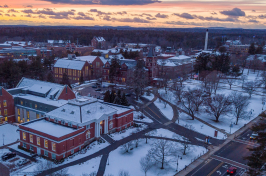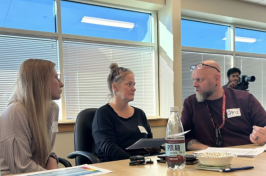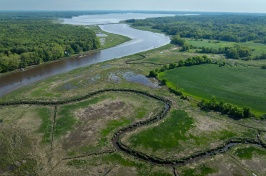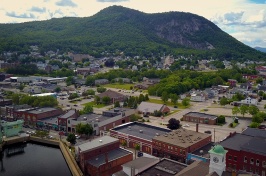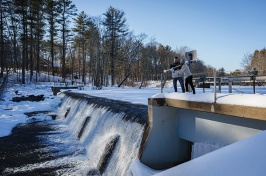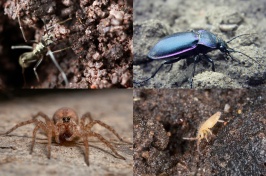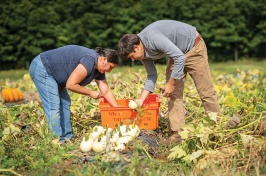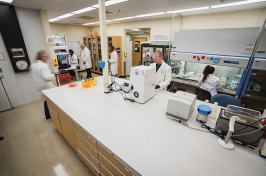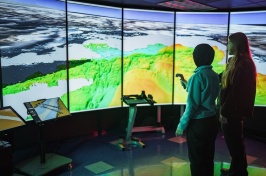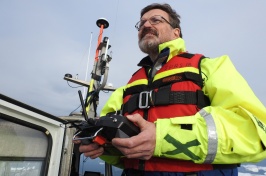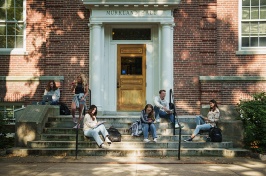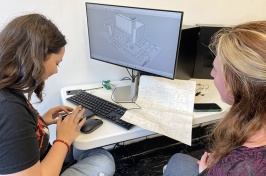Ten Ways UNH is Helping Communities be Environmentally Friendly
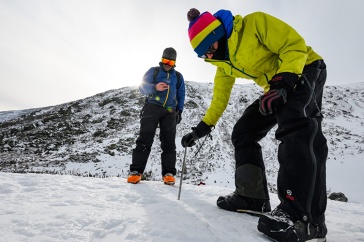
DURHAM, N.H. — University of New Hampshire researchers are partnering with local communities, farmers and residents to make the Earth a better place, often using participatory science which directly involves the public in the process. Home to the country’s first endowed Sustainability Institute, UNH fosters a healthy planet spirit that permeates the civic, professional and personal lives of our neighbors, near and far. As Earth Day approaches on April 22, here are 10 ways UNH is helping local communities, and those around the world, preserve the planet.
PFAS Community Testing
Working with residents from local communities, UNH researchers have been testing foam that forms on top of rivers, streams and beaches for substances known as PFAS (per- and polyfluoroalkyl) — byproducts of plastics, cleaning substances, electronics and other consumer products. Community members approached UNH scientists because PFAS are odorless and tasteless and can be harmful to humans or animals. Thanks to funding from NH Sea Grant, Paula Mouser, professor of civil and environmental engineering at UNH, worked side by side with residents on a pilot study to test foam samples from local waterways finding that the toxic chemicals were seven to 70 times higher in the surface foam than levels in the underlying surface water.
Lasting Lake Life
Thousands of tourists and Granite State residents look forward to enjoying a little ‘lake life’ each summer — swimming, boating and fishing. As a part of UNH’s vital Extension program, the Lakes Lay Monitoring Program (LLMP) helps track the health of these vital bodies of water for harmful bacteria like cyanobacteria — a bluish-green algae that can be harmful to humans and animals. UNH’s LLMP trains students and concerned citizens to take samples from lakes around the state on a regular basis gathering information on water clarity, temperature and local conditions that could signal challenges to the lake’s water quality.
Flooding Sensors to Help Preserve Local Museum from Sea Level Rise
As rising sea levels and flooding threatened the historic homes at Portsmouth’s Strawbery Banke Museum, UNH researchers have been helping mitigate the problem by developing and installing sensor technology that monitors water levels, temperature and salinity in the basements. Being able to monitor these measurements helps the museum plan and adapt and preserve the centuries old buildings.
Teach a Man to Fish, Sustainably
UNH’s Center for Sustainable Seafood Systems is creating a global educational program that will focus on community-based seafood production for students from around the world to implement aquaculture techniques specific to their culture and communities. The multi-disciplinary program will bring together UNH expertise from several areas including marine science, ocean engineering, business and sustainability to help address food availability for future generations. Each student will design an aquaculture approach that addresses climates specific to their community and guide them to choose socially acceptable seafood products.
Moo’ving Methane to Lower Levels
UNH’s New Hampshire Agricultural Experiment Station researchers have partnered with Bigelow Laboratory for Ocean Sciences to work with dairy farmers in New England to investigate adding seaweed to the diet of dairy cows to improve milk quality, animal health and help reduce the production of methane, a greenhouse gas. They have been looking at a supplemental seaweed feed to reduce methane, which is a part of the animal’s normal digestive processes, in a cost-effective manner. Recent research by UNH found that nearly half of organic dairy farmers are receptive to the idea and would be willing to pay a little extra for a methane-reducing seaweed feed.
Climate Tolerant Crops
Researchers at UNH think they have found a good candidate for a climate tolerant, pollinator-friendly crop — Tartary buckwheat, an underutilized crop with high nutritional value and unique qualities that make it suitable across a wide range of soils and weather conditions. The researchers have been growing and evaluating the lesser-known buckwheat species which can grow in just a few months and tolerate dry and infertile conditions. Its rapid growth cycle and ability to establish and thrive in depleted soils makes Tartary buckwheat a promising summer crop in regional rotations, suppressing weeds and reducing the need for pesticides and synthetic fertilizers. Nutritionally, Tartary buckwheat is gluten free, boasts high levels of rutin (a flavonoid linked to heart and brain health), contains a balanced amino acid profile, and is a great source of micronutrients.
Reducing Carbon Footprints
UNH’s Sustainability Institute is aiding communities and businesses across New Hampshire and the region to reduce carbon footprints by providing critical measurements. SIMAP (Sustainability Indicator Management and Analysis Platform) is a one-of-a-kind, UNH-created nitrogen and carbon accounting platform used by more than 500 academic institutions, nonprofits, small businesses, municipalities and other organizations. The institute offers a Climate Action Clinic to train students to help organizations use SIMAP and reduce emissions. To date, over 90 students have helped close to 30 organizations and more than half are using the clinic findings to accelerate existing energy efficiency efforts, purchased renewables and engage in new practices to identify practical, short-term direct reduction opportunities.
Inspiring Students with the Earth Around Us
The “Earth Around Us” tent project brings high-quality outdoor STEAM experiences to young students (K-4) in elementary schools around the Northeast. The program shares pop-up tents with ecosystem murals, storybooks and hands-on activities that help enhance students’ scientific understanding of the soil, water and Earth systems and introduce them to local scientists, foresters and ecologists. The tents were developed through a collaboration between the New Hampshire GLOBE Partnership at the University of New Hampshire and the USDA Forest Service.
The Future of Snow
Researchers in UNH’s Earth Systems Research Center are focusing on the rapid warming of winters in the Northeastern U.S, looking at the impact of carbon dioxide emissions on future climate warming scenarios. Liz Burakowski, a research assistant professor, and Alexandra Contosta, a research associate professor, found that a reduction in emissions could help retain almost three weeks of snow cover and below-freezing temperatures which are important in preserving vital forest ecosystems as well as maintaining the region’s multimillion-dollar winter recreation industry.
Microplastic Mystery
Scientists at UNH are helping address public concerns about microplastics in local estuaries, like Great Bay in New Hampshire and Great Marsh in Massachusetts, and helping people understand their impact. Microplastics are small plastic pieces that can accumulate in areas with weaker water flow, submerged vegetation and limited seabed erosion. It can be found in and be harmful to juvenile fish, shellfish, crustaceans and other aquatic life. Data collected by scientists at UNH are being used to create models to learn where the microplastics originate, where they settle and accumulate in the waterbody, their impact and if they may be increasing or decreasing over time.
Latest News
-
April 15, 2025
-
Research Finds Rural Americans Carry Heavy Burden Accessing Social Security Benefits and InformationMarch 27, 2025
-
March 25, 2025
-
March 17, 2025
-
March 12, 2025





